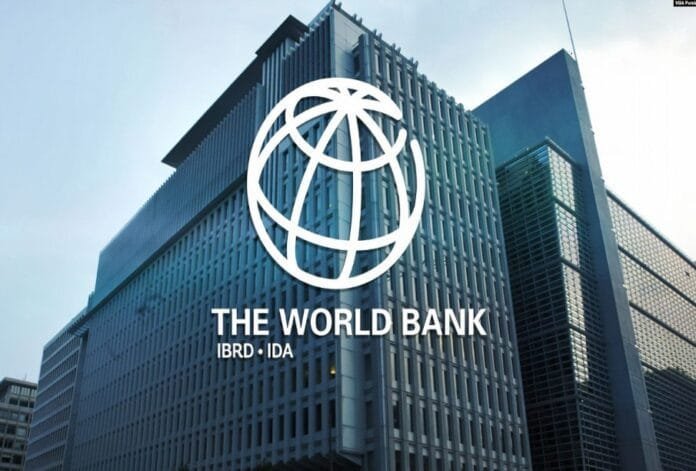Explore the Financial Products of the World Bank in Mozambique
The World Bank provides a variety of financial products, technical advice, and analyses to address development challenges, helping countries find solutions to achieve sustainable and inclusive development. As one of the world’s largest sources of funding and knowledge for developing countries, the five institutions of the World Bank Group (WBG) are committed to reducing poverty, increasing shared prosperity, and promoting sustainable development.
Mozambique has access to a range of financial instruments from the World Bank Groupection of financial instruments depends on the country’s needs and the specific development challenge being addressed. These instruments (complemented by knowledge activities) are subject to periodic reviews to incorporate lessons learned globally .
Theee main categories of financial products used in Mozambique and most IDA beneficiary countries in Sub-Saharan Africa:
1. Investment Lending (Investment Project Financing – IPF) IPF provides funding to governments for activities that create the physical and social infrastructure needed to reduce poverty and achieve sustainable development. Most IDA funding to Mozambique is in the form of IPF, representing approximately 90% of the $5.1 billion the World Bank has committed to the country (as of September 2022).The IPF is utilized across all sectors, including infrastructure (water, energy, roads), human development, agriculture, and public administration. It focuses on medium- to long-term goals (5–10 years) and supports a wide range of activities, including capital-intensive investments, agricultural development, service delivery, credit and grant provision [including microcredit], community-based development, and institution building.
The IPF not only provides countries with much-needed low-cost financing but also serves as a vehicle for sustained global knowledge transfer and technical assistance. This includes support for analytical and design work during the conceptual phases of project preparation, technical expertise (including project management, fiduciary, and environmental and social activities), and institutional capacity building throughout project implementation.
1.1 Multiphase Programmatic Approach (MPA) The MPA allows countries to structure long-term, large, or complex engagements into a series of smaller, linked operations under a single program. Mozambique benefits from one such MPA.
Currently, the MPA for Mozambique provides an indicative financing envelope of $850 million to support the country’s road sector. The MPA spans ten years, with $400 million approved in August 2022 to finance the design and rehabilitation of safer and climate-resilient roads. This project covers 508 kilometers of priority road segments, including:
- Metoro–Pemba (94 kilometers) in Cabo Delgado province;
- Gorongosa–Caia Lot 1 (0–84 kilometers), Gorongosa–Caia Lot 2 (84–168 kilometers), and Inchope–Gorongosa (70 kilometers) in Sofala province;
- Chimuara–Nicoadala Lot 1 (0–88 kilometers) and Chimuara–Lot 2 (88–176 kilometers) in Zambezia province.
The project also promotes community engagement, women’s empowerment, road safety management, institutional development, project management, and emergency response.
The MPA encourages adaptive learning and financing to better align resources with changing country circumstances. This “adaptive approach” also facilitates crowding in additional sources of capital to support development goals.
2. Development Policy Financing (DPF) DPF provides budget support to governments for policy and institutional reforms through non-earmarked general budget financing. The use of DPF in a country is determined within its national context.
The World Bank resumed regular budget support operations for Mozambique in August 2022, approving the first $300 million installment of a three-year programmatic DPF. This operation supports Mozambique’s economic recovery from COVID-19, addresses institutional bottlenecks through reforms, and provides much-needed financing to counter fiscal constraints.
DPF funds are made available based on:
- Maintenance of an adequate macroeconomic policy framework, determined by the World Bank with inputs from IMF evaluations.
- Satisfactory implementation of a global reform program.
- Completion of critical policy and institutional actions agreed upon between the World Bank and the country (known as Prior Actions).
Typically, DPFs support actions to strengthen public financial management, improve business and investment climates, address bottlenecks in service delivery to vulnerable groups, and diversify the economy. The World Bank assesses whether specific policies are likely to have significant impacts on poverty and social sectors, particularly on the poor and vulnerable, and whether they could cause environmental harm.
3. Program-for-Results Financing (PforR)
Introduced in 2012, PforR links World Bank fund disbursement directly to the achievement of defined results, helping countries improve their development program design and implementation while strengthening institutions and systems.
Current PforR projects in Mozambique include:
- The $96 million Disaster Risk Management and Resilience Program.
- The $170 million Primary Healthcare Strengthening Program.
PforR’s unique features include the use of the beneficiary country’s own institutions and processes. This approach builds domestic capacity, enhances effectiveness and efficiency, and delivers long-term, tangible, and sustainable results.
Other Financial Instruments
Trust Funds (TF): Trust funds are financing arrangements established with contributions from one or more development partners to complement WBG’s core financing. Mozambique is one of the top ten recipients of trust funds, which play a crucial role in leveraging World Bank resources for health, energy, and fragility agendas.
As of September 2022, Mozambique’s World Bank portfolio includes 23 trust funds, supporting critical programs and projects with an approximate value of $500 million.
Learn More:
For additional details, visit:





